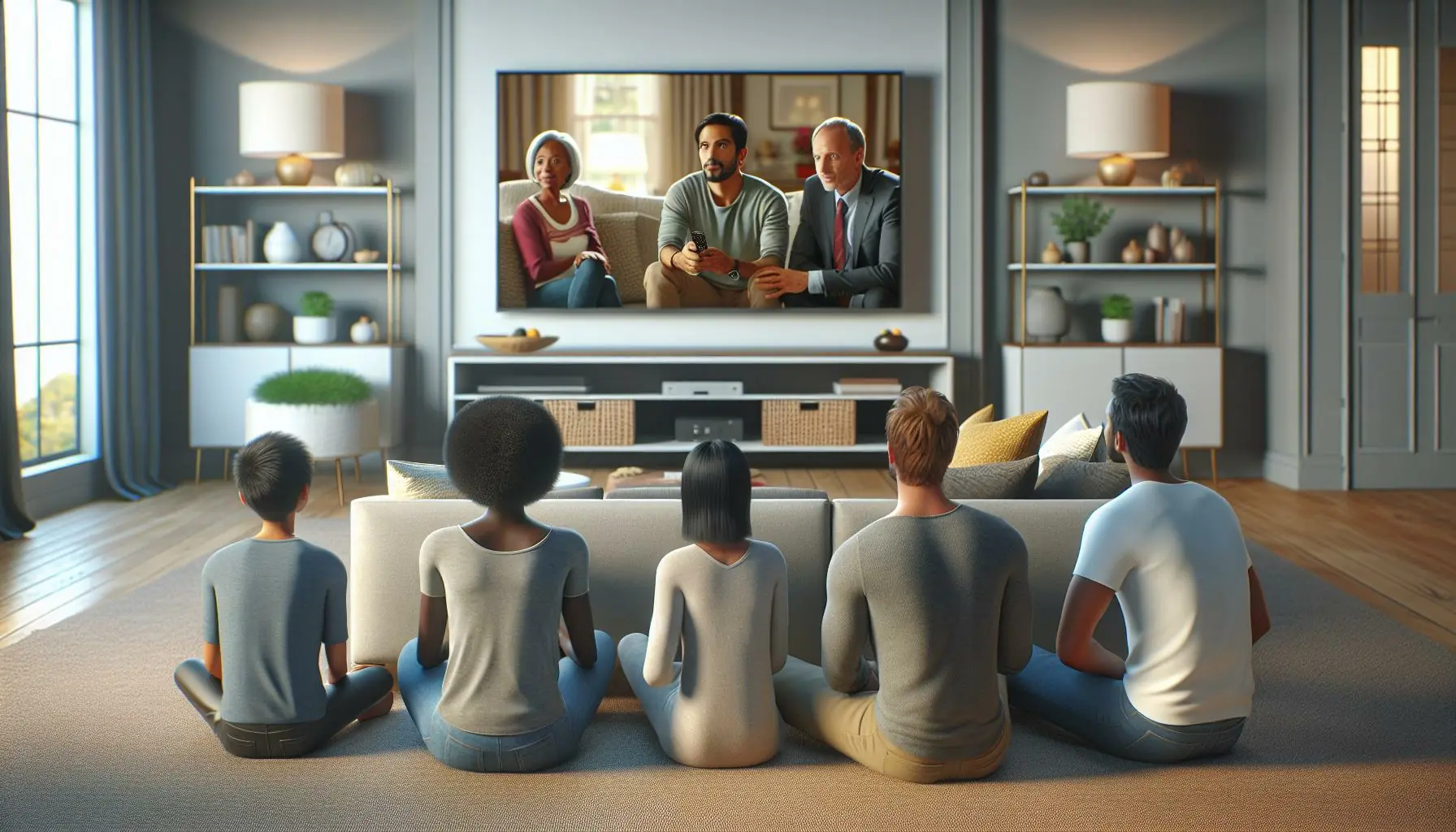Table of Contents
ToggleWhile TV commercials still make viewers rush to the bathroom during breaks social media ads have mastered the art of stopping thumbs mid-scroll. It’s the classic battle of the advertising titans – traditional television versus the dynamic world of social media marketing.
In today’s digital age businesses face a crucial decision: stick with the tried-and-true TV commercials or dive into the fast-paced realm of social media advertising. With TV reaching mass audiences during prime time and social media offering laser-focused targeting it’s no wonder marketers are scratching their heads. Each platform brings unique advantages to the table making the choice between them more complex than choosing between pizza toppings.
Understanding TV and Social Media as Advertising Channels
TV advertising broadcasts messages to mass audiences through scheduled programming slots across broadcast stations cable networks. The average American watches 3 hours of television daily with 18 minutes of commercials per hour.
Social media advertising delivers targeted messages through platforms like Facebook Instagram Twitter. These platforms reach 4.9 billion active users globally enabling precise audience targeting based on demographics interests behaviors.
| Platform Type | Reach (Monthly) | Ad Format Options | Average Cost per 1000 Views |
|---|---|---|---|
| TV | 120M US households | 15-60 second spots | $25-$35 |
| Social Media | 250M US users | Image video carousel story | $7-$12 |
Traditional TV advertising creates brand awareness through:
- Prime time programming slots reaching mass audiences
- High production value commercials with cinematic quality
- Regional market coverage through local network affiliates
- Established measurement metrics through Nielsen ratings
Social media advertising generates engagement through:
- Granular audience targeting capabilities
- Real time performance tracking analytics
- Multiple ad format options for different objectives
- Direct response features enabling instant conversion
The key differences in advertising delivery include:
- TV follows fixed programming schedules while social media runs 24/7
- TV reaches broader demographics while social media targets specific segments
- TV requires higher upfront production costs while social media enables quick creation
- TV measures viewership broadly while social media tracks individual interactions
These distinct characteristics shape how brands allocate advertising budgets between traditional television social media channels to achieve their marketing objectives.
The Reach and Impact of Television Advertising

Television advertising continues to command significant audience attention through broadcast networks, cable channels and streaming platforms. The medium’s broad reach spans diverse demographic groups across multiple dayparts, creating varied opportunities for brand exposure.
Traditional TV Viewership Demographics
Linear television reaches 96% of U.S. households aged 55 and older, making it particularly effective for targeting mature audiences. Adults aged 35-54 represent 28% of traditional TV viewers, while millennials aged 18-34 account for 23% of the viewing audience. Peak viewing hours occur between 8-11 PM when 59% of households tune in to television programming. Gender distribution remains relatively balanced with women comprising 52% of viewers compared to 48% men across all age groups.
| Age Group | Percentage of TV Viewers |
|---|---|
| 55+ | 49% |
| 35-54 | 28% |
| 18-34 | 23% |
Cost Structure of TV Ad Campaigns
Television advertising requires substantial upfront investment in production and airtime costs. Prime-time network TV spots average $115,000 for 30-second commercial slots. Production expenses range from $50,000 to $750,000 based on creative complexity. Local TV advertising costs $5 to $35 per thousand viewers for smaller markets. Cable network rates average $5,000 to $25,000 per 30-second spot during regular programming.
| Ad Type | Cost Range |
|---|---|
| Prime-time Network | $115,000/30 sec |
| Cable Network | $5,000-$25,000/30 sec |
| Local TV | $5-$35 per 1000 viewers |
Social Media Advertising Landscape

Social media advertising reaches 4.9 billion active users through targeted campaigns across multiple platforms. The digital advertising ecosystem enables precise audience segmentation with real-time performance tracking.
Platform-Specific Targeting Options
Meta platforms offer demographic targeting based on age, location, interests, behaviors plus lookalike audiences matching existing customers. Instagram focuses on visual engagement through Stories, Reels and in-feed posts with targeting options for fashion, beauty and lifestyle segments. LinkedIn provides B2B targeting parameters including job titles, company size, industry and professional skills. Twitter ads target users based on conversation topics, followed accounts and engagement patterns. TikTok leverages interest categories, viewing habits and interaction data to reach Gen Z and millennial audiences.
| Metric | Industry Average |
|---|---|
| Click-through Rate | 1.55% |
| Cost per Mile | $7.19 |
| Cost per Action | $18.68 |
| Return on Ad Spend | 2.87x |
Key Differences in Audience Engagement
Audience engagement varies significantly between TV advertising and social media platforms. The fundamental distinction lies in how viewers interact with content and how advertisers measure success across these channels.
One-Way vs Interactive Communication
TV advertising creates a passive viewing experience where audiences receive messages without direct interaction capabilities. Viewers watch commercials during scheduled programming breaks with limited opportunities for immediate response. Social media platforms enable two-way conversations between brands and consumers through comments, shares, likes and direct messages. Meta platforms record 6 billion reactions daily while TV commercials average 18 minutes of daily passive viewing time per person. Instagram stories generate 500 million daily active users who interact through swipes, taps and responses. This interactive nature allows brands to gather instant feedback, adjust messaging and build community relationships.
Measuring Campaign Performance
TV advertising relies on traditional metrics like Nielsen ratings, gross rating points and estimated reach calculations. Networks measure viewership through representative household samples, tracking approximately 42,000 homes across the United States. Social media platforms provide real-time performance data including click-through rates of 1.55%, engagement rates of 4.25% and conversion tracking capabilities. Meta’s advertising dashboard displays cost per result, reach, frequency and demographic breakdowns of engaged users. TikTok ads generate 15.9% engagement rates compared to TV’s average viewer retention rate of 92% during prime time programming. These precise analytics enable advertisers to optimize campaigns based on actual user behavior data.
The Future of Advertising: Integration of Both Mediums
Modern advertising strategies combine traditional TV advertising with social media campaigns to maximize reach and engagement. The integration creates a complementary approach that leverages the strengths of both platforms.
Cross-Platform Campaign Strategies
Cross-platform campaigns synchronize content delivery across TV and social media channels for enhanced impact. Brands broadcast TV commercials during prime-time slots while simultaneously running targeted social media ads that complement the television message. The strategy includes sharing TV ad content on social platforms to extend reach beyond the initial broadcast audience. Advertisers track viewer behavior through hashtags displayed in TV commercials, connecting offline viewership to online engagement. Real-time social media responses during TV broadcasts create dual-screen experiences that capture audience attention across multiple touchpoints. Advanced analytics tools measure the combined performance of integrated campaigns through unified metrics that track both TV ratings and social media engagement.
Emerging Hybrid Solutions
Connected TV platforms bridge traditional television with digital targeting capabilities. Smart TV advertising technology enables programmatic ad buying that combines broadcast reach with social media-style audience segmentation. Streaming services incorporate interactive elements from social media into traditional video advertisements, allowing viewers to engage directly with content. Shoppable TV ads link to social commerce platforms, creating seamless purchase pathways for viewers. Advanced attribution models track customer journeys across TV exposures and social media interactions to measure true campaign effectiveness. Artificial intelligence optimizes ad delivery by analyzing viewing patterns across both mediums to determine optimal placement strategies.
Conclusion
Both TV and social media advertising offer unique advantages in today’s marketing landscape. While TV continues to deliver broad reach and brand authority through high-quality content social media provides precise targeting and immediate engagement opportunities.
The future of advertising doesn’t require choosing between these platforms. Smart marketers are embracing hybrid strategies that combine TV’s mass-market impact with social media’s personalized approach. This integration allows brands to leverage the strengths of both channels while minimizing their individual limitations.
Success in modern advertising requires understanding each platform’s distinct capabilities and strategically utilizing them to achieve specific marketing objectives. As technology evolves businesses that adapt their strategies to incorporate both traditional and digital channels will likely see the strongest results.




